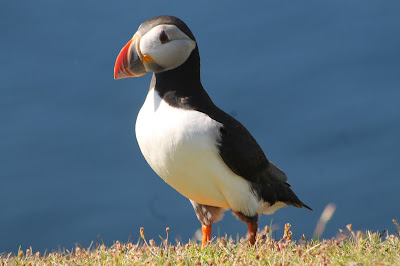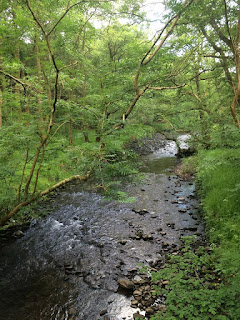I remember feeling under immense pressure as a
sixth-former, as I had no idea what I wanted to do. I had quite a mixture of
hobbies but none of them seemed to link together. The AS levels I was
encouraged to take didn’t go quite to plan, so I left school with one A
level, and a few AS levels.
I had mentioned that I enjoyed helping people, and
my family were encouraging me to explore areas in healthcare, so I went to
college for two years, and undertook fast-track A-levels, alongside part-time
work, choosing to focus on Biology and ICT. Then, I went for something that
interested me and started BSc Audiology at Swansea University. It was a fantastic course, but after two years and many months of placements
around Wales I realised that this wasn’t the career for me.
It was one of the hardest decisions I’ve had to
make, and felt quite alone in doing so, but I ended up switching degrees
completely and jumping into something I knew I would enjoy, despite worrying comments along the lines of "there is no career in that".
I am now in my final year of BSc Ecology, and have
not looked back since.
This brings me on to what I believe is the most important thing:
This brings me on to what I believe is the most important thing:
1) Go
for something that you enjoy.
Whether this involves going to university and
choosing a course, or looking for internships or apprentices, getting as much
experience in your field of interest is the only way to find out if you will
enjoy this career.
If you make the decision to apply to University,
then there is still careful consideration needed when choosing a course.
If, like me, you have general interests, rather
than specific ones, it may be worth looking for courses with a common first
year, or foundation year where you may be able to move between similar subjects
as you find out more about what you like.
This is where:
2) Looking
at the modules within a degree puts you at a great advantage.
I actually started studying Zoology at Cardiff, but
Ecology had more modules which I found interesting as I realised in year one
that I enjoyed field work more much more than laboratory work. Thanks to the
Bioscience common first year at Cardiff University, I could choose to switch
degree from Zoology to Ecology, without having to start again.
If you are preparing for the move to University, I
fully recommend:
3) Join
some societies.
There is Usually a nature or Wildlife and
conservation society, and some Universities have an Ornithological society too.
These groups can provide a key link to volunteering opportunities, experience
or training. Universities list these online, so you can beat
the crowds and take your time to find the ones that interest you, and get in
contact.
During your degree:
4) Try
to be as proactive as possible...
...and look for experiences outside the classroom. Employers
are looking for relevant experience in addition to higher education
qualifications.
University examinations may seem daunting, but as
long as you:
5) Stay organised and read up on advised material, you will be fine.
For me A-levels were more difficult as you had to
give a specific keyword to get the mark. In University lecturers mark your
work, so there’s much more of a chance to show them what you know in so many
different ways. These people chose a lectureship because they are passionate
about this area, so give them something exciting, like current research papers,
or question the science.
And finally:
6) Consider
your health and well-being.
Sometimes our work load increases and this may put
pressure on us and other aspects of our social and personal well-being. It is
important to take time to relax, stay healthy and get out as much as possible. If
you feel you are struggling, Universities offer a range of personal services
which can help students who feel under pressure or who are struggling with work
related or personal issues. These services are invaluable and I cannot recommend
them enough.
One of the reasons I chose Cardiff is because it is
such a green city, with parks, lakes and reserves in and around the City. One
of my favourite breaks is to have a walk around Roath Lake Park, have a look at
the birds and other wildlife and perhaps grab an ice cream or take a ride on a peddle
boat. Also, I enjoy going with a group
of friends at dusk, to see the amazing abundance of bats, feeding among the
trees and over the water.
This brings me to wish you the very best in your
future career, whichever direction you choose to take. Apply yourself, steady
yourself with the help of loved ones around you and seize new opportunities to
make memories that will last a lifetime.
Thank you for reading.
Thank you for reading.
Alexandra @I_amkinsey
President of Cardiff University Ornithological Society











































